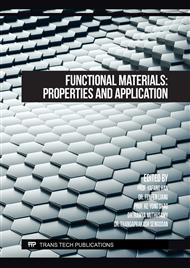p.67
p.79
p.87
p.95
p.103
p.111
p.119
p.129
p.137
Effect of Boron Content on the Transverse Stress Rupture Properties of a Directionally Solidified Superalloy
Abstract:
The effect of boron content on the transverse stress rupture properties of a directionally solidified columnar superalloy is studied in present research. The experimental results indicate that the transverse stress property of the alloy containing 0.015% boron reaches the peak value at 870°C /380MPa while that of the alloy with 0.005% boron is the best at 1100°C/40MPa. At 870°C, dislocation slip is the main deformation mode. Stress concentration is induced when dislocations are hindered by precipitates at grain boundaries and interdendritic regions. And then cracks nucleate due to the stress concentration. In the alloy containing 0.015% boron, no borides precipitate and boron strengthens the grain boundary cohesion by solid solution. At 1100°C, grain boundary movement becomes the main deformation mode. In the alloy with 0.005% boron, the strengthening of grain boundary cohesion decreases comparing with that of alloy with 0.015% boron, and the resistance to grain boundary movement reduces with decreasing B content. Therefore, it results in compatible deformation between adjacent grains, resulting in the longest stress rupture lifetime.
Info:
Periodical:
Pages:
103-110
Citation:
Online since:
October 2022
Authors:
Price:
Сopyright:
© 2022 Trans Tech Publications Ltd. All Rights Reserved
Share:
Citation:


